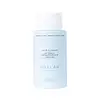What's inside
What's inside
 Key Ingredients
Key Ingredients

 Benefits
Benefits

 Concerns
Concerns

 Ingredients Side-by-side
Ingredients Side-by-side

Aloe Barbadensis Leaf Juice
Skin ConditioningSodium Methyl Cocoyl Taurate
CleansingSodium Lauroyl Methyl Isethionate
CleansingCocamidopropyl Betaine
CleansingCocamide Mipa
EmulsifyingGlycerin
HumectantSodium Hyaluronate
HumectantHydrolyzed Hyaluronic Acid
HumectantNiacinamide
SmoothingAvena Sativa Kernel Extract
AbrasiveAlthaea Officinalis Root Extract
Skin ConditioningHelianthus Annuus Flower
Skin ConditioningSalvia Officinalis Oil
MaskingPanthenol
Skin ConditioningTocopheryl Acetate
AntioxidantGuar Hydroxypropyltrimonium Chloride
Skin ConditioningSodium Lauroyl Glutamate
PEG-150 Distearate
EmulsifyingGlycol Distearate
EmollientMagnesium Chloride
Citric Acid
BufferingPhenoxyethanol
PreservativeChlorphenesin
AntimicrobialSodium Benzoate
MaskingAloe Barbadensis Leaf Juice, Sodium Methyl Cocoyl Taurate, Sodium Lauroyl Methyl Isethionate, Cocamidopropyl Betaine, Cocamide Mipa, Glycerin, Sodium Hyaluronate, Hydrolyzed Hyaluronic Acid, Niacinamide, Avena Sativa Kernel Extract, Althaea Officinalis Root Extract, Helianthus Annuus Flower, Salvia Officinalis Oil, Panthenol, Tocopheryl Acetate, Guar Hydroxypropyltrimonium Chloride, Sodium Lauroyl Glutamate, PEG-150 Distearate, Glycol Distearate, Magnesium Chloride, Citric Acid, Phenoxyethanol, Chlorphenesin, Sodium Benzoate
Water
Skin ConditioningSodium Lauroyl Methyl Isethionate
CleansingCocamidopropyl Betaine
CleansingDisodium Laureth Sulfosuccinate
CleansingSodium Lauryl Sulfoacetate
CleansingGlycerin
HumectantPunica Granatum Fruit Extract
AntioxidantHydrolyzed Wheat Protein
Skin ConditioningPhyllostachys Nigra Leaf Extract
Skin ConditioningHelianthus Annuus Seed Oil
EmollientHydrolyzed Vegetable Protein Pg-Propyl Silanetriol
Skin ConditioningGlycol Distearate
EmollientSodium Chloride
MaskingLinoleamidopropyl Pg-Dimonium Chloride Phosphate Dimethicone
Amodimethicone/Morpholinomethyl Silsesquioxane Copolymer
Guar Hydroxypropyltrimonium Chloride
Skin ConditioningPEG-150 Pentaerythrityl Tetrastearate
EmulsifyingTrideceth-5
EmulsifyingDehydroacetic Acid
PreservativeLactic Acid
BufferingQuaternium-95
UV AbsorberPPG-2 Hydroxyethyl Cocamide
EmulsifyingPropanediol
SolventPotassium Sorbate
PreservativeDisodium EDTA
Pentaerythrityl Tetra-Di-T-Butyl Hydroxyhydrocinnamate
AntioxidantEthylhexylglycerin
Skin ConditioningSodium Benzoate
MaskingLinalool
PerfumingBenzyl Salicylate
PerfumingLimonene
PerfumingBenzyl Alcohol
PerfumingPhenoxyethanol
PreservativeParfum
MaskingCI 16035
Cosmetic ColorantCI 42090
Cosmetic ColorantWater, Sodium Lauroyl Methyl Isethionate, Cocamidopropyl Betaine, Disodium Laureth Sulfosuccinate, Sodium Lauryl Sulfoacetate, Glycerin, Punica Granatum Fruit Extract, Hydrolyzed Wheat Protein, Phyllostachys Nigra Leaf Extract, Helianthus Annuus Seed Oil, Hydrolyzed Vegetable Protein Pg-Propyl Silanetriol, Glycol Distearate, Sodium Chloride, Linoleamidopropyl Pg-Dimonium Chloride Phosphate Dimethicone, Amodimethicone/Morpholinomethyl Silsesquioxane Copolymer, Guar Hydroxypropyltrimonium Chloride, PEG-150 Pentaerythrityl Tetrastearate, Trideceth-5, Dehydroacetic Acid, Lactic Acid, Quaternium-95, PPG-2 Hydroxyethyl Cocamide, Propanediol, Potassium Sorbate, Disodium EDTA, Pentaerythrityl Tetra-Di-T-Butyl Hydroxyhydrocinnamate, Ethylhexylglycerin, Sodium Benzoate, Linalool, Benzyl Salicylate, Limonene, Benzyl Alcohol, Phenoxyethanol, Parfum, CI 16035, CI 42090
 Reviews
Reviews

Ingredients Explained
These ingredients are found in both products.
Ingredients higher up in an ingredient list are typically present in a larger amount.
Cocamidopropyl Betaine is a fatty acid created by mixing similar compounds in coconut oil and dimethylaminopropylamine, a compound with two amino groups.
This ingredient is a surfactant and cleanser. It helps gather the dirt, pollutants, and other impurities in your skin to be washed away. It also helps thicken a product and make the texture more creamy.
Being created from coconut oil means Cocamidopropyl Betaine is hydrating for the skin.
While Cocamidopropyl Betaine was believed to be an allergen, a study from 2012 disproved this. It found two compounds in unpure Cocamidopropyl Betaine to be the irritants: aminoamide and 3-dimethylaminopropylamine. High-grade and pure Cocamidopropyl Betaine did not induce allergic reactions during this study.
Learn more about Cocamidopropyl BetaineGlycerin is already naturally found in your skin. It helps moisturize and protect your skin.
A study from 2016 found glycerin to be more effective as a humectant than AHAs and hyaluronic acid.
As a humectant, it helps the skin stay hydrated by pulling moisture to your skin. The low molecular weight of glycerin allows it to pull moisture into the deeper layers of your skin.
Hydrated skin improves your skin barrier; Your skin barrier helps protect against irritants and bacteria.
Glycerin has also been found to have antimicrobial and antiviral properties. Due to these properties, glycerin is often used in wound and burn treatments.
In cosmetics, glycerin is usually derived from plants such as soybean or palm. However, it can also be sourced from animals, such as tallow or animal fat.
This ingredient is organic, colorless, odorless, and non-toxic.
Glycerin is the name for this ingredient in American English. British English uses Glycerol/Glycerine.
Learn more about GlycerinGlycol Distearate serves as a pearlizing or opacifying agent in cosmetic products.
It's often included in cleansers and haircare products to give them a lustrous or shimmering appearance.
It is derived from stearic acid, a natural fatty acid commonly found in vegetable oils and animal fats.
Glycol Distearate isn't fungal acne safe.
Learn more about Glycol DistearateThis ingredient is derived from guar gum.
It is a conditioning ingredient, meaning it helps soften skin and hair.
Phenoxyethanol is a preservative that has germicide, antimicrobial, and aromatic properties. Studies show that phenoxyethanol can prevent microbial growth. By itself, it has a scent that is similar to that of a rose.
It's often used in formulations along with Caprylyl Glycol to preserve the shelf life of products.
Sodium Benzoate is a preservative. It's used in both cosmetic and food products to inhibit the growth of mold and bacteria. It is typically produced synthetically.
Both the US FDA and EU Health Committee have approved the use of sodium benzoate. In the US, levels of 0.1% (of the total product) are allowed.
Sodium benzoate works as a preservative by inhibiting the growth of bacteria inside of cells. It prevents the cell from fermenting a type of sugar using an enzyme called phosphofructokinase.
It is the salt of benzoic acid. Foods containing sodium benzoate include soda, salad dressings, condiments, fruit juices, wines, and snack foods.
Studies for using ascorbic acid and sodium benzoate in cosmetics are lacking, especially in skincare routines with multiple steps.
We always recommend speaking with a professional, such as a dermatologist, if you have any concerns.
Learn more about Sodium BenzoateSodium Lauroyl Methyl Isethionate is a cleansing ingredient. It is a surfactant, meaning it helps gather dirt, oil, and other pollutants. This helps them be rinsed away easily.